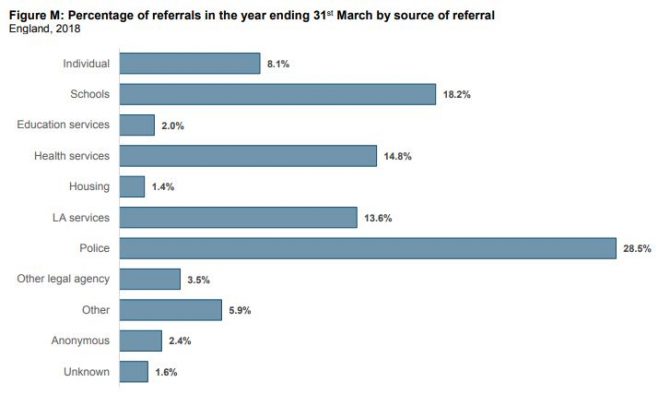Schools are sending more vulnerable children to social care services, with more than 119,000 cases last year, the latest government data has revealed.
In 2017-18, schools were responsible for referring 119,030 children in need to social care services, an increase of nearly 4,500 compared with the previous year.
This was 18.2 per cent of of the total referrals to children’s social services in England in 2017-18, a 0.5 percentage point increase on 2016-17, when schools made 114,530 referrals.
Pupils are said to be “in need” if they are assessed as needing social care services to achieve a “reasonable standard of health or development”, or to prevent significant or further harm happening to them. This includes children with disabilities.

In March this year the government announced a review to examine and seek to improve the educational outcomes of children considered to be “in need”.
The review wanted to hear specifically from headteachers, designated safeguarding leads, special educational needs coordinators and educational psychologists, and feedback is still being analysed by the Department for Education.
The previous year Schools Week also reported that schools were under pressure to become “mini welfare states” to support vulnerable pupils as child poverty increased.
In 2017-18, schools were second only to the police as a source of referrals. The police made 186,920 referrals – 28.5 per cent of the 655,630 referrals made in total in England. This represented a one percentage point increase from 2016-17.
Health services were the third most common source of referrals, dealing with 96,780 cases, or 14.8 per cent.

The data is drawn from the children in need census, which collects information about every child referred to children’s social care services every year, as well as any cases already being dealt with by local authorities at the beginning of the year.
The overall number of children in need increased from 389,040 in 2017 to 404,710 in 2018, a rise of four per cent.
However, the percentage of children in need with a disability has decreased this year from 12.9 per cent in 2017 to 12.3 per cent in 2018. This percentage has fluctuated over the last six years but there has been an overall decrease, from 13.8 per cent in 2013.
Children in need are divided into three groups: children who have been given a child in need plan, those who have a child protection plan, and looked-after children who are in care. Reasons for being categorised as in need can include abuse or neglect, domestic violence and mental health problems such as acute stress.








Your thoughts